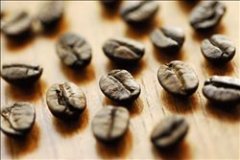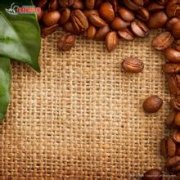Description of the flavor and flavor characteristics of El Salvador Pacamara boutique coffee beans with both fruity and rich aroma

Pacamara coffee is a Pacas Pacas (a sudden variant of the bourbon) found in El Salvador in the 1950s.
Hybrid with giant bean Maragogype (a sudden variant of Tibica found in Brazil).
The coffee tree is very tall, and the branch spacing of the trunk is wider than that of Pacas Pacas.
The edges of the dark green leaves are wavy
The cultivation is suitable for elevation 900m to 1500m.
The higher the elevation of the planting site, the better the quality.
Because the harvest yield is not high, so the cultivation amount is also very small.
Planted in El Salvador, Honduras, Nicaragua and other countries.
There is also a yellow Pakamara.
When it comes to the Pakamara species in Saudi Arabia, we have to introduce Pacamara Manor first. In Ecuador in 1984, the fascists could buy the Pakamara Coffee Garden as the new owner. The Falesco family has been growing coffee in the Apaneca mountains since their grandparents for more than a hundred years. Urgado wanted to take a different path from his grandparents and decided to plant a new species, Pacamara, which had just been developed from the agricultural technology unit of Saudi Arabia. He found that this new species had a large and beautiful appearance, and could show a good flavor and aroma under excellent local conditions. He found new hope and found the rising star in his mind, but the first harvest turned out to be the beginning of hard work.
Pacamara bean shape is too large, in the treatment field for peeling and separation, often stuck in the holes or gaps of the machine, the machine must be adjusted from time to time to deal with separately. Due to the limited initial output of Pacamara, coupled with the fact that there are few large seeds in the country, most washing plants lack experience in dealing with large coffee fruits, not to mention extra sieves with larger mesh to specially deal with Pakamara species, so they are naturally reluctant to deal with new species. The problem of wet treatment after harvest will not be solved until 1990 when the Awasan Cooperative released its goodwill and was willing to sign a contract with Ecuador. After Urguado has no worries, with more skilled planting techniques, harvesting coffee cherries with the same maturity, and careful post-harvest treatment, finally make the Pacamara species of Pacamara estate shine! I won the 24 place in 2003, the seventh place in 2005 and the runner-up in 2008, when I and Japan's Maruyama Coffee jointly awarded the runner-up batch.
The introduction of new varieties is always a hard and high-risk attempt, not to mention that the probability of failure is high, and if it succeeds, everyone will follow, but if you do not try to innovate, you will never wait for the chance of success, and the sufferings of coffee farmers. Bourbon is already the largest variety in sa, with a national planting rate as high as 60%. The fruit next to sa Guobo has four colors of red and yellow orange with a small amount of pink bourbon. Pacamara, which belongs to large granule, is a new variety cultivated by Pacas and elephant bean. Pacamara originated in sa, but its output is much less than that of Bourbon. Sa Coffee Committee uses the marketing slogan of smiling drinking, plus smiling logo to promote Sabuo bourbon beans, and to strengthen the impression of strong varieties of beans in the national competition with Pacamara, who is constantly in the limelight in the Excellence Cup. The two major varieties compete for the title in the national competition, and each year the top 10 finals of Zhuoyou Cup, Bourbon vs Pacamara, which breed is the champion? The constant talk has also caused neighboring countries to follow the trend of scrambling to grow Pakamara.
Since 2006, in the process of searching for and marking beans, I have tested the Pacamara species of 30 high-quality estates with the international judges of Osher. In fact, there is no shortage of superstars in the boutique coffee circle, including Santa Marie, champion of Honduras in 2006, Montenegro Manor, runner-up in 2007, Incht, champion of Guatemala in 2008, and Pakamara Manor, runner-up in Saudi Arabia. Including, of course, the 2012 Samaritan champion, Blumas Manor.
Pacamara is full of flavor, rich and changeable is rare in other varieties, for example, in addition to fruit and rich taste, but also with apricot, vanilla plants, tropical fruits, chocolate, sweet spices and other changes. But there is no better. Mature Pakamara coffee trees will show a gradual decline in yield or occasional unstable flavor, and have high requirements for soil and water and microclimate. When planted in inappropriate locations, they will be slightly less clean and have a bad wood smell. The owner of Santa Marie, the winner of the Excellence Cup in Honduras, has analyzed to me that bean bakers who like Pakamara should choose their products and estates carefully to avoid stepping on the mines of Pacamara the old bear.
Variety producing area
It was first cultivated by El Salvador and is still the main producing area in El Salvador. In addition, there are also many plants in Central and American countries, such as Nicaragua.
Variety flavor
Keywords: chocolate chocolate, high alcohol big body, balanced balance.
Variety becomes famous
Pacamara is another example of making a name for itself through COE events. In the 90s of the 20th century, some farmers in the Chalatenango producing area of South Song in Charat, El Salvador began to grow Pracamara. In 2006, a farm in this producing area took part in the competition with Pacamara and got the second place. In 2007, a number of farms in the same production area took part in the competition with Pacamara and won the first, third and fourth places. The brilliant record made Pacamara win attention.
Important Notice :
前街咖啡 FrontStreet Coffee has moved to new addredd:
FrontStreet Coffee Address: 315,Donghua East Road,GuangZhou
Tel:020 38364473
- Prev

A brief introduction to the grind degree and baking degree treatment method of meticulous and elegant Sidamo boutique coffee beans
Sidamo is the main producing area of boutique beans, and the coffee beans are famous for their excellent fruit characteristics and delicate and elegant flavor. Yega Xuefei, as we all know, is a small city belonging to Sidamo, and the ancient saying means wetland. Altitude: 1950 m varieties: Heirloom treatment: sun baking degree: light baking price: ¥109 / half pound (coffee beans / powder) ¥88 /
- Next

Fruit aroma sour and sweet feeling Salvador Pacamara boutique coffee beans origin development history culture Jane
Salvadoran coffee is a Central American specialty, light, aromatic, pure and slightly acidic. Like Guatemala and Costa Rica, coffee in El Salvador is graded according to altitude, with the higher the altitude, the better the coffee. The best brand is Pipil, which is Aztec Mayan for coffee, and it has acquired
Related
- Detailed explanation of Jadeite planting Land in Panamanian Jadeite Manor introduction to the grading system of Jadeite competitive bidding, Red bid, Green bid and Rose Summer
- Story of Coffee planting in Brenka region of Costa Rica Stonehenge Manor anaerobic heavy honey treatment of flavor mouth
- What's on the barrel of Blue Mountain Coffee beans?
- Can American coffee also pull flowers? How to use hot American style to pull out a good-looking pattern?
- Can you make a cold extract with coffee beans? What is the right proportion for cold-extracted coffee formula?
- Indonesian PWN Gold Mandrine Coffee Origin Features Flavor How to Chong? Mandolin coffee is American.
- A brief introduction to the flavor characteristics of Brazilian yellow bourbon coffee beans
- What is the effect of different water quality on the flavor of cold-extracted coffee? What kind of water is best for brewing coffee?
- Why do you think of Rose Summer whenever you mention Panamanian coffee?
- Introduction to the characteristics of authentic blue mountain coffee bean producing areas? What is the CIB Coffee Authority in Jamaica?

